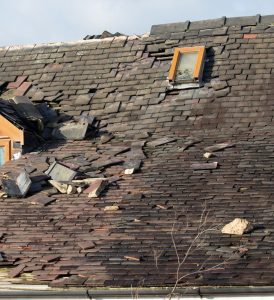Gutters are a system of channels or troughs that are installed along the edges of a roof. Their purpose is to collect and redirect rainwater away from the building’s foundation and walls. This helps to prevent water damage, erosion, and flooding around the base of the building.
Additionally, gutters can also protect landscaping and other outdoor features by directing water away from them. Overall, the main purpose of gutters is to protect the structural integrity of the building and its surroundings by diverting water away from it.
Clogged gutters can cause a number of problems for a building. When gutters become clogged with debris such as leaves, twigs, and other materials, water is prevented from flowing through them properly.
This can cause water to overflow the gutters and fall near the foundation of the building, increasing the risk of water damage, erosion, and flooding. Additionally, clogged gutters can cause damage to the roof by allowing water to seep under shingles or other roofing materials. Pest infestations can occur as a result of clogged gutters.
Causes of Clogged Gutters
Debris
Debris build up, such as leaves, twigs, and other materials, is one of the main causes of clogged gutters. During the autumn season, leaves from trees can accumulate in the gutters, blocking the flow of water.
Twigs, branches and other debris can also collect in the gutters, especially if trees are near the building. This debris can also serve as a breeding ground for pests, such as mosquitoes, and can cause an unpleasant smell.
When the gutters are clogged with debris, water is prevented from flowing through them properly, leading to a variety of problems including overflowing, water damage, and erosion. It’s important for regular gutter cleaning to prevent debris build up and to maintain proper function.
Lack of maintenance
Lack of maintenance is another common cause of clogged gutters. When gutters are not regularly inspected and cleaned, debris can accumulate over time, resulting in clogs. Additionally, a lack of maintenance can also lead to issues with the slope or installation of the gutters, making them more susceptible to clogs and water damage.
Without regular maintenance, small issues that could be easily resolved can become big problems. It’s important to schedule regular inspections and cleanings of the gutters to ensure that they are functioning properly and to prevent clogs from forming.
Additionally, it is recommended to hire professionals for regular maintenance, as they can detect and fix any potential issues before they become major problems.
Consequences of Clogged Gutters
Damage to roof foundation
Clogged gutters can cause damage to both the roof and foundation of a building. When water is prevented from flowing through the gutters properly, it can overflow and fall near the foundation of the building, increasing the risk of water damage, erosion, and flooding.
This can cause damage to the foundation and the walls of the building, leading to costly repairs. Additionally, clogged gutters can cause damage to the roof by allowing water to seep under shingles or other roofing materials, which can lead to leaks and structural damage.
The water can also saturate the insulation in the attic and cause mould growth. This can cause a variety of problems, including rot, structural damage, and potential health hazards. It’s important to maintain the gutters and to promptly fix any issues that arise to prevent damage to the roof and foundation.
Water infiltration into the home
Clogged gutters can cause water infiltration into the home, by allowing water to overflow the gutters and fall near the foundation of the building. When water is allowed to accumulate around the foundation of a building, it can seep into the home through the walls or floor, causing damage to the interior of the building.
This can result in water-damaged walls, floors, and ceilings, as well as the potential for mould growth. Water infiltration can also cause damage to electrical wiring, HVAC systems, and other components of the home.
Additionally, water infiltration can lead to unpleasant odours and potential health hazards. It’s important to prevent clogged gutters and to promptly fix any issues that arise to prevent water infiltration into the home.
Prevention and Maintenance
Conclusion
Gutters are a system of channels installed along the edges of a roof that collect and redirect rainwater away from the building’s foundation and walls. This helps to prevent water damage, erosion, and flooding around the base of the building and protects landscaping and other outdoor features. Clogged gutters can cause a variety of problems, including overflowing, water damage, erosion, and pest infestations.
The main causes of clogged gutters are debris build-up, such as leaves, twigs, and other materials, and lack of maintenance. Consequences of clogged gutters include damage to the roof and foundation, water infiltration into the home, and potential health hazards.
It’s important to maintain gutters by regularly inspecting and cleaning them and hiring professionals for regular maintenance to prevent clogs and potential issues.




